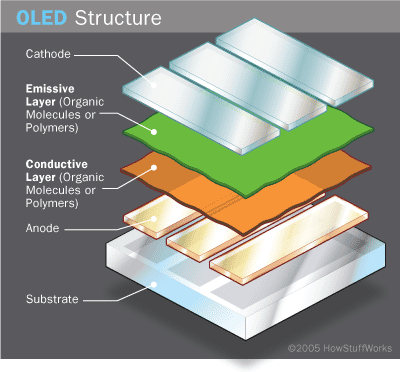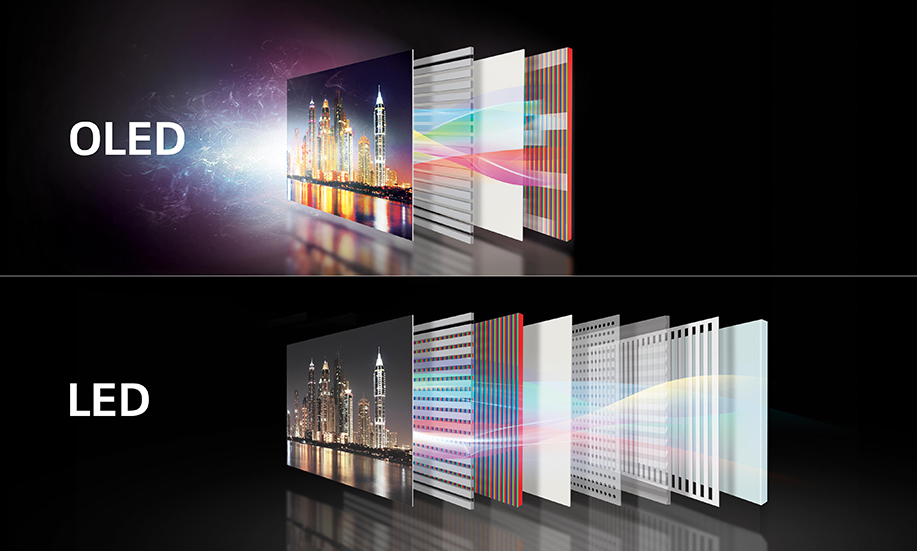Today’s blog post is sponsored by DataRay – a leading manufacturer of laser beam profiling solutions.
Smartphones only improve with each evolution of upgrades. Every time the capabilities of technology reach farther than they did the last time with each brand boasting their product as the one with the newest features, the clearest camera, and the highest speeds. Some of the specifications are easier to compare than others. If you are looking for a phone that has a certain size or with a specific amount of storage, then these parameters may narrow down your options. Display type, though arguably the feature receiving the highest amount of interaction, be it through touching or viewing the screen, is sometimes put on the backburner in the list of ‘must-haves’ when smartphone shopping. Overlooking the screen type is a mistake. Let us explore the most popularly available types of screens and their advantages and disadvantages beginning with the screen structure.
Liquid Crystal Displays or LCDs
LCD screens are popular for both smartphone screens as well as computer monitors and televisions. LCDs are either backlit or edge-lit. The light shines through a liquid layer sandwiched between polarized glass layers. Electric current is used to control which pixels are on or off. The current adjusts the crystal orientation, thus allowing or prohibiting light from passing through the polarizers.
LED (light emitting diode) displays are typically a grid of arranged red, green, and blue LEDs. The LEDs act as pixels and are controlled to display the desired image. Sometimes, LEDs are chosen to be the source used for backlighting LCD displays. In this case, the display type would be an LED LCD display.
Organic LEDS (OLEDs)
OLED screens are made up of a carbon-based film that is layered between an anode and a cathode. The electrodes excite the charge carriers. The charge carriers move and recombine in the carbon layer, while some reach an excited state. When they relax from the excited state, light is emitted. Since the primary emissive layer is built into the screen (as opposed to LCD where it must be illuminated in other ways, i.e. backlit or edge-lit), this makes the OLED screen thinner. More layers of other materials can be added for durability and reinforcement purposes.

A breakdown of the internal layers of OLED technology. Courtesy of HowStuffWorks.
Other OLED Structures
There are subcategories of OLEDs. Active matrix LEDs are controlled (as the name implies), actively. Each pixel can be located and individually controlled through a thin film transistor and capacitor corresponding to each LED. Some screens can be PMOLED, which stands for Passive Matrix OLEDs. With PMOLED displays, the entire screen is split into a grid and controlled using circuitry controlling that section of the grid. Passive control is a slower and less precise method of controlling the LEDs than using active control. Using active control also permits each of the LEDs to be turned completely off. The ability to completely shut off each LED results in improved contrast in images when compared to LCD screens.
Display Efficiency, Longevity, and Thickness
Obviously, between the screen types mentioned, some will perform better in some areas than others. When it comes to efficiency, LCD screens tend to be less efficient than LED or OLED screens. However, depending on the brightness of an OLED screen, an OLED one may consume more power than both LED and LCD screens. This is because OLED screen brightness is directly related to its energy consumption. At a normal brightness, LCD screens perform better in bright sunlight than the other two options.
Organic LEDs have an abbreviated lifetime in comparison to non-organic LED counterparts. The blue pixels experience the fastest degradation, followed by the greens, and finally the reds. In fact, the lifetime of some OLED screens have been found to be anywhere from a roughly two to three times shorter than that of LCD or LED screens. Manufacturers of OLEDs are working to improve the lifetime.

Another structural breakdown to visualize the layers between OLED and LED screen types. Clearly, OLED screens are thinner than even LED screens. Courtesy of Harvest Cellular.
LCD screens tend to be thicker and heavier than LED or OLED screens. This is a consequence of the added layers for the polarization and lighting elements. Since OLED screens can be created in sheets, this makes them simpler to produce than LCD screens. The thinness of OLED screens has allowed for some flexibility—in the most literal sense. The flexibility of OLED screens has helped facilitate the ability for companies to produce foldable smartphones. Both LED and OLED screens are more expensive to create (thus, also more expensive for the consumer) than LCD, though.
Display Image and Viewing Quality
OLEDs have a wider field of view than LCD screens. Some OLED displays have been reported to have a field of view as wide as 170 degrees. Since a key component to LCD functionality is polarization, there are some angles at which the display will not be viewable.
Display contrast is improved when considering OLED screens to LCD screens. The ability to turn the pixels completely off in LED/OLED screens allows for better battery life for devices having these display types.
One may wonder which type of screen offers the best image resolution. The resolution is not inherent to the nature of the screen’s illumination, but by the pixel count. One reason display resolutions have improved is simply the number of pixels being packed into each inch of the screen. When the resolution of the screen meets or exceeds the resolution of the eye, the display can produce very sharp images. At the typical viewing distance under normal conditions, this kind of resolution means that a person would not be able to resolve the individual pixels that comprise the screen. This provides a better, crisper image for the user. LCD, LED, and OLED screens are all available with comparable resolutions.
LCD LED or LED screens at this juncture would be one’s best bet, though with development, OLED screens may surpass them both.
